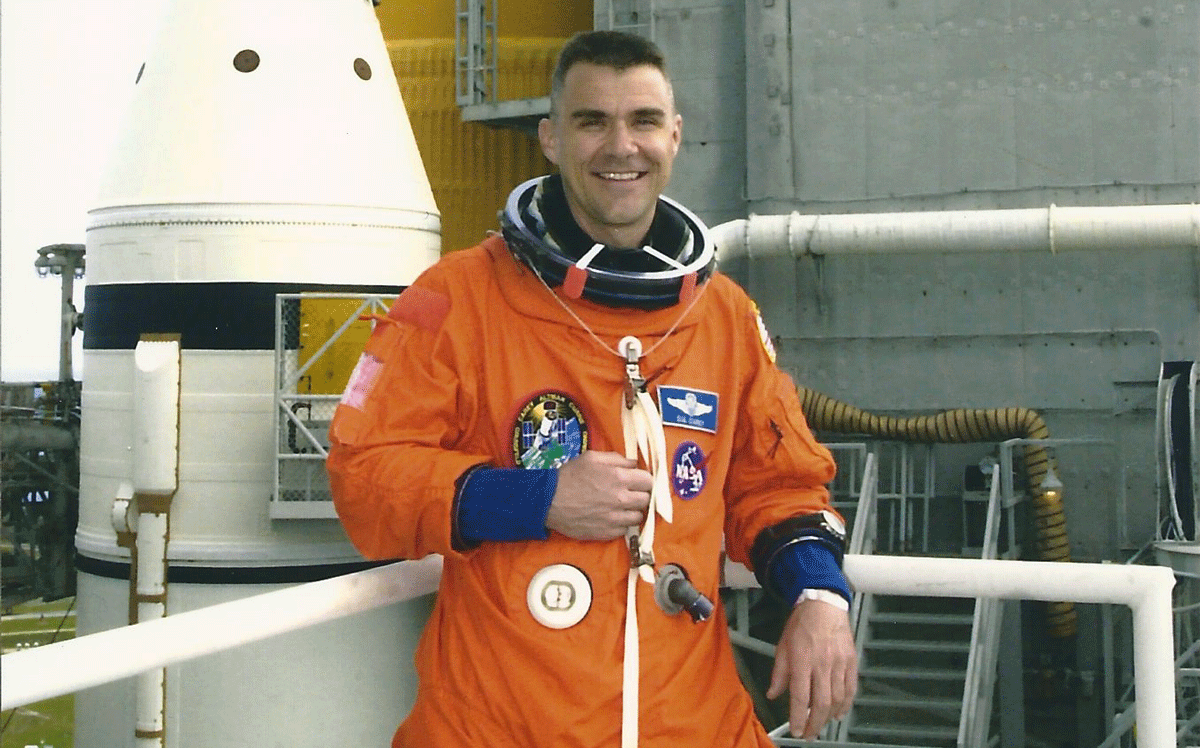Astronaut Duane “Digger” Carey visits UALR
Former astronaut Duane “Digger” Carey will discuss his 2002 mission to the Hubble Space Telescope during a visit to the University of Arkansas at Little Rock on Feb. 25.
He will also talk about his education in aerospace engineering and his career as a test and fighter pilot in the U.S. Air Force, where he logged more than 4,300 hours in more than 35 types of aircraft. The presentation is free and open to the public and will be followed by a question and answer session.
The talk, sponsored by the Arkansas Space Grant Consortium, will be held at 3 p.m. Thursday, Feb. 25, in the Engineering and Information Technology Building Auditorium.
“Digger, as he likes to be called, served as pilot on the space shuttle Columbia, and they had to calculate how to rendezvous with the Hubble Space Telescope satellite,” said Dr. Keith Hudson, director of the Arkansas Space Grant Consortium. “A lot of things can go wrong if two objects collide in space. Everything had to be just perfect.”
Carey will discuss the orbital mechanics involved during the rendezvous between the space shuttle and Hubble telescope. Orbital, or flight mechanics, involves the study of the motions of artificial satellites and space vehicles under the influence of forces such as gravity, atmospheric drag, and thrust.
After graduating from the University of Minnesota-Minneapolis, earning a bachelor’s degree in aerospace engineering and mechanics in 1981 and a master’s degree in aerospace engineering in 1982, Carey received his commission from the Reserve Officer Training Corps in 1981 and graduated from undergraduate pilot training in 1983.
His flight experience includes the A-10A during tours at England Air Force Base, Louisiana, and Suwon Air Base in the Republic of Korea. He completed F-16 training in 1988 and was assigned to Torrejon Air Base in Spain. He flew more than 30 combat missions in Operation Desert Storm over Iraq.
In 1991, he was selected to attend the U.S. Air Force Test Pilot School at Edwards Air Force Base in California. After graduation in 1992, he worked as an F-16 experimental test pilot and system safety officer at Edwards Air Force Base, where he specialized in performance and flying qualities testing of the F-16.
Having been selected as an astronaut candidate in 1996, Carey completed two years of training and evaluation at NASA Johnson Space Center in Houston before qualifying for flight assignment as a pilot. He was first assigned technical duties in the Astronaut Office Spacecraft Systems/Operations Branch and later served as a Shuttle CAPCOM in Mission Control.
Carey logged more than 10 days in space during his first space flight. From March 1 to March 12, 2002, he served as a pilot on STS-109 Columbia during the fourth servicing mission for the Hubble Space Telescope. The crew of STS-109 successfully upgraded the Hubble Space Telescope, leaving it with a new power unit, a new camera and new solar arrays. STS-109 orbited the Earth 165 times and covered 3.9 million miles during the course of more than 260 hours.
After a successful career with the Air Force and NASA, Carey left NASA in 2004 to pursue other interests. Carey and his wife, Cheryl, currently travel around the country, educating young people about the importance of America’s exploration and research programs.
